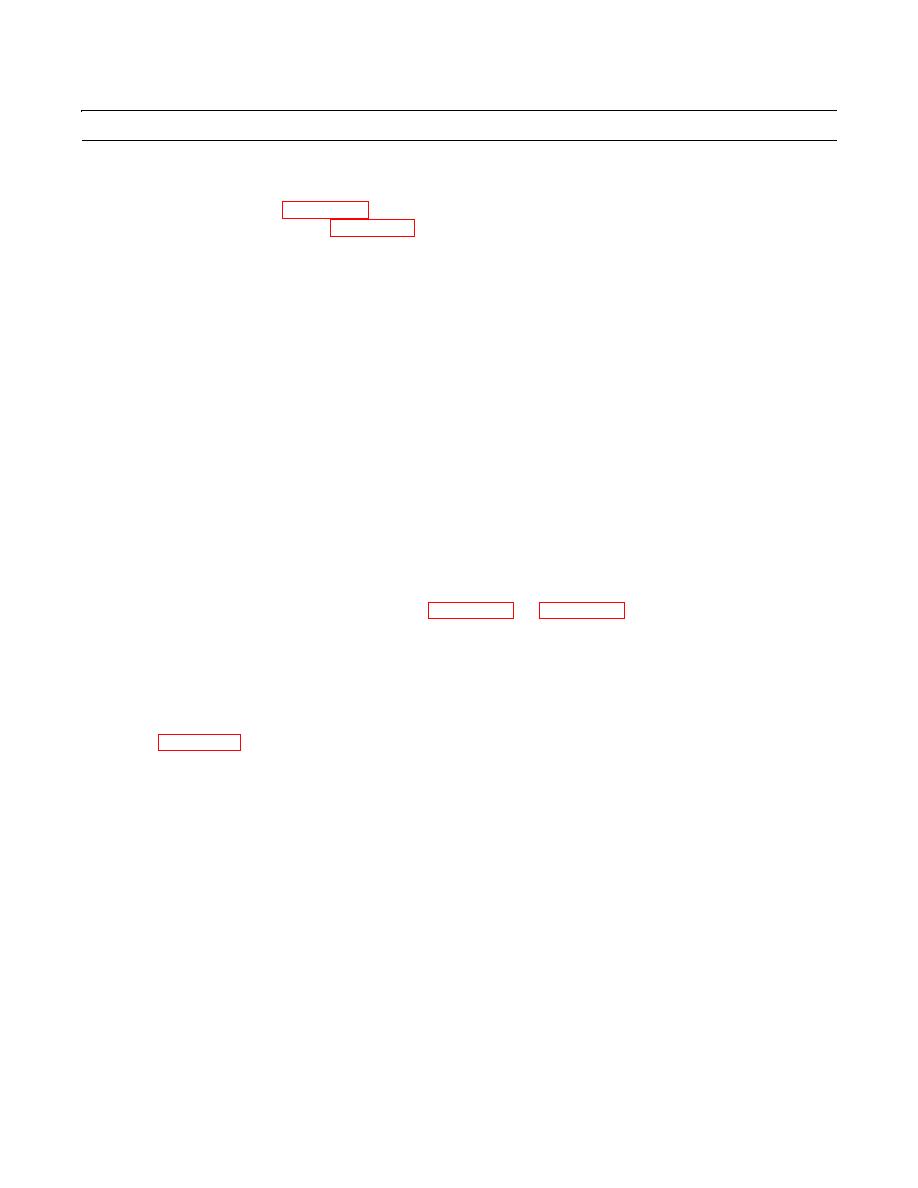
TM 10-3930-641-10
TROUBLESHOOTING INTRODUCTION
INTRODUCTION
1.
Troubleshooting procedures are grouped by system, containing information you need to locate malfunctions. A trouble-
shooting symptom index in WP 0009 00 is provided to aid in locating a malfunction or symptom and direct you to the
appropriate troubleshooting table in WP 0010 00.
2.
The troubleshooting table contains a listing of malfunctions, test or inspection procedures, and corrective actions. The
corrective action column further directs you to the required corrective maintenance procedure within this manual by
work package number. However, if the required maintenance procedure is beyond Operator level capabilities, the direc-
tion is to notify Organizational Maintenance.
PRELIMINARY TROUBLESHOOTING PROCEDURES
NOTE
Fluid leaks are classified as either Class I, Class II, or Class III.
Class I
Seepage of fluid (as indicated by wetness or discoloration) not great enough to
form drops.
Class II
Leakage of fluid great enough to form drops, but not enough to cause drops to
drip from item being checked/inspected.
Class III
Leakage of fluid great enough to form drops that fall from item being checked/
inspected.
Before starting any specific troubleshooting procedures, perform the following:
1.
Visually check all hoses and tubes for leaks.
2.
Check for mechanical jamming or binding caused by rocks or other foreign matter.
3.
Check fluid levels in subject area and fill as required (WP 0011 00 and WP 0012 00).
ELECTRICAL TROUBLESHOOTING
1.
Analyze the symptoms and conditions to determine the most likely cause for the problem, then troubleshoot that circuit
first. The more information you have concerning the problem, the easier it will be to troubleshoot.
2.
Isolate to the subsystem level (in cases where more than one subsystem is involved); next isolate the problem to a single
circuit within the subsystem; then, isolate the problem to the faulty component using the Troubleshooting Symptom
Index (WP 0009 00).
3.
Frayed, broken, loose, or corroded wiring is a common source of problems in any electrical circuit. Always make a
visual inspection before starting detailed troubleshooting. Inspect contacts to ground carefully because components with
case grounds are especially troublesome.
END OF WORK PACKAGE

